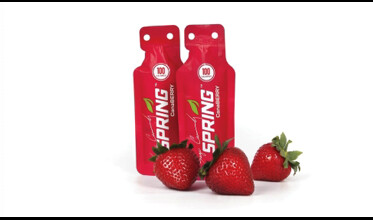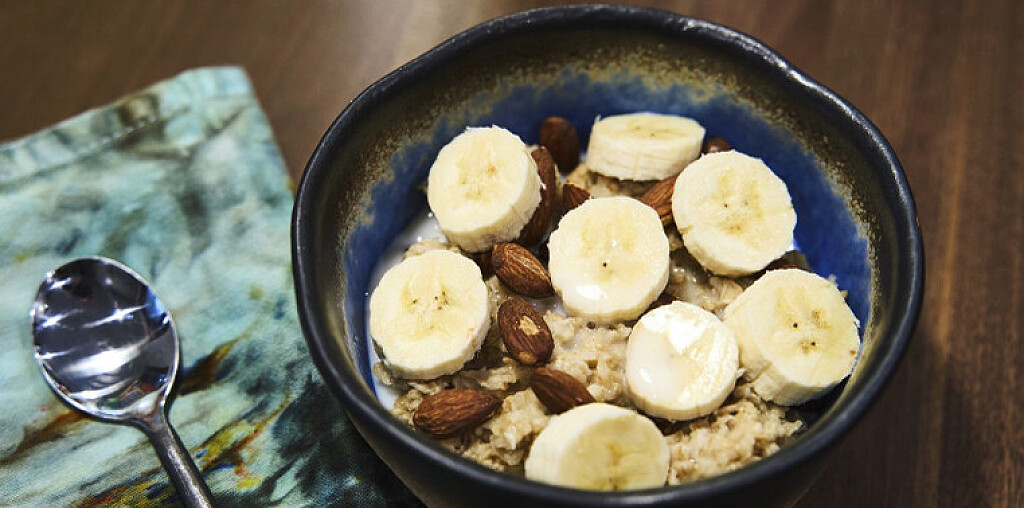Running News Daily
Running News Daily is edited by Bob Anderson. Send your news items to bob@mybestruns.com Advertising opportunities available. Train the Kenyan Way at KATA Kenya and Portugal owned and operated by Bob Anderson. Be sure to catch our movie A Long Run the movie KATA Running Camps and KATA Potato Farms - 31 now open in Kenya! https://kata.ke/
Index to Daily Posts · Sign Up For Updates · Run The World Feed
Practicing Your Fuel Stops Should Be a Part of Your Marathon Training Plan—Here’s Why
Focus on nutrition on long run days so you can conquer the miles—without hitting the wall or running to the bathroom.
You train for speed, endurance, and strength before toeing the starting line at a race, gradually building up your distance and pace to make sure you’re ready to take on the miles. But sports dietitians confirm that most runners overlook one vital focus area during training—that is, your gut.

“Your digestive tract isn’t used to running and taking in food at the same time. The constant up-and-down motion of running coupled with the blood flowing away from the gut and toward the working muscles usually results in a wonky stomach,” says marathoner Natalie Rizzo, MS, RD, dietitian and founder of Greenletes in New York City. “But that doesn’t need to be the case. Just like you need to train your muscles to run, you need to train your gut to accept the fuel it needs.”
The more you practice, the better your gut will be able to handle the energy it needs, says Angie Asche, MS, RD, CSSD, a Lincoln, Nebraska-based dietitian and owner of Eleat Sports Nutrition. For any training run longer than an hour, consider giving your race-day nutrition strategy a trial run. That means eating the breakfast you would have on race day and consuming the fueling products you’ll have midrun at structured intervals throughout your miles. Practicing your plan should then help you fine-tune your fueling come race day.
Because we all have different body sizes (and, as a result, energy needs) as well as gastrointestinal (GI) tracts, the best fueling strategy looks different for each person. However, a study published in 2021 in Nutrients and a review published in 2017 in Current Opinion in Gastroenterology recommend that if you notice an upset stomach or diarrhea while running, steer clear of the following items for the two hours prior to and during a run:
Dairy products
Meat
Caffeine
Sugar alcohols and artificial sweeteners
Foods with a higher proportion of fat or protein than carbs
Anything with 5 grams or more of fiber
How to Prepare Your Digestion for Race Day
Pregame with care
Aim for at least 1 gram of carbs per kilogram of body weight in your prerace meal. (For a 180-pound runner, that’s about 82 grams of carbs.) If you have time, the goal is to eat three to four hours before a race lasting two hours or more, aiming for 3 to 4 grams of carbs per kilogram of body weight.
If you have only two hours to eat before heading to the start, go for 2 grams per kilogram of body weight. To help a 180-pound person reach their carb goal in the hours leading up to a race, Megan Robinson, MS, RD, CSSD, sports dietitian in Paoli, Pennsylvania, suggests having a large bagel with nut butter, and a fruit smoothie (made with a large banana, 1 cup of berries, and 1 cup of almond milk) three hours before your run. Then one to two hours prior to the start, consider having a sports drink containing 60 grams of carbs plus 2 ounces of pretzels.
Time it right
Aim for about 30 to 60 grams of carbohydrates for every hour of running after the first 60 minutes. Consider splitting those carbs up so you have a snack at 30-minute intervals. (For reference, 20 ounces of a sports drink, one gel, or one medium banana offers about 30 grams of carbs.)
“That said, the best way to train your gut is to start with a smaller amount of fuel and build up to the amount your body needs,” Rizzo says. “Use long training runs to start with that smaller amount, like 8 ounces of a sports drink, half of a gel, or half of a banana. Once your stomach can tolerate the smaller amount, add in more fuel.” To gradually build up your fuel intake, try to double your midrun snack every two weeks until you reach your end goal.
Stay hydrated
To reduce the risk for an upset stomach, acid reflux, or diarrhea, drink enough water to prevent dehydration, especially with chews or gels. “These all contain a large amount of carbs for their size, and if you do not consume water while ingesting them, it can lead to stomach cramping,” Robinson says. That’s because water moves out of the body and into the intestines to dilute the sugar, and without more H2O, you can get dehydrated or GI distress. As a general guideline, aim for 4 to 8 ounces of water every 15 minutes.
Tune in to what’s not working
Your body will make it clear if your gut isn’t having a good time. Gas, bloating, side stitches, diarrhea, nausea, and upset stomach can all indicate danger. If your stomach feels okay, but you notice that you’re bonking, crank up the carbs before running. “Some runners we work with aim for 4 grams per kilogram body weight four hours prerace,” Asche adds. You can start with that 1 gram of carbs per kilogram of body weight prerace (and make sure to get enough midrun fuel) and see how your final kick feels, adding in more carbs as necessary.
Feed your good gut bacteria
On rest days and on days with short runs, aim to eat gut health-promoting items. “Fermented foods, like yogurt, kefir, miso, sauerkraut, and pickles, are rich in probiotics that help build a healthy gut,” Rizzo says. Fiber can also aid in preventing constipation. Just scale up both fiber and probiotic intake slowly in order to avoid GI distress.
4 Gut-Friendly Fuel Options
While the best fit for your fuel is individualized, those who struggle with GI issues tend to have the best luck with sports supplements that have two types of sugar, like glucose and fructose, rather than just one. “Each type of sugar uses a different receptor in the bloodstream, so the body can absorb both of them quickly without causing any GI issues,” says Rizzo.
If you prefer whole-food options, try orange slices, dried cherries, or dried figs, all of which contain at least two natural sugars. For a packaged product, consider these dual-sugar selections:
by Runner’s World
Login to leave a comment




